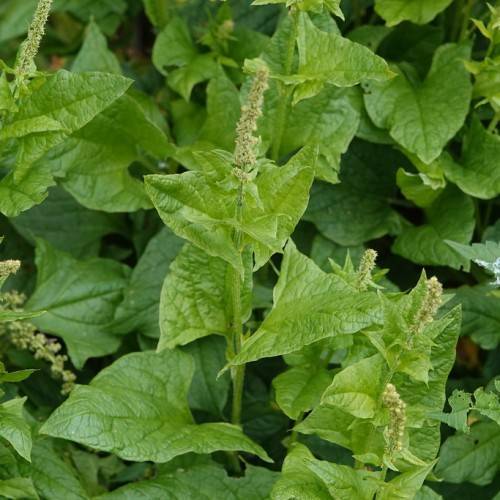
Good King Henry
Blitum bonus-henricus
Watering:
Frequent
Hardiness Zone:
Sun:
full sun,part shade
Leaf:
Yes
Growth Rate:
Low
Drought Tolerant:
Yes
Salt Tolerant:
Yes
Thorny:
Yes
Care Level:
Medium
watering
Alpine Bistort (Bistorta vivipara) should be watered every week during the growing season (spring to fall). The best method is to provide a thorough irrigation every 7 days or so, ensuring that all parts of the plant receive a good soaking. During summer months, it is best to water in the early morning, allowing the soil to fully dry out during the day. Make sure the soil remains moist but not soggy as this may cause rot and fungal problems. In winter time, water less frequently, providing no more than a shallow soak every 3 weeks or so.
sunlight
Alpine Bistort (Bistorta vivipara) is a plant species native to mountainous regions of central and northern Europe. It requires full sun exposure for most of the day to properly grow and thrive, and can best survive in warm climates from zones 3 to 7. This plant prefers to spend a minimum of 6 hours a day in direct sunlight, and more is even better. While it can handle partial shade, it will produce fewer flowers and be less resistant to disease if not receiving at least 6 hours a day of direct sunlight. It is best to ensure that this amount of sun exposure is received throughout the full duration of the plant's growing season, from early spring to early fall.
pruning
Alpine Bistort should be lightly pruned in late spring after the majority of growth has finished. Only dead or damaged stems should be removed, and the plants should not be cut back into old wood. This will promote basal growth for increased flowering the following season. Pruning too severely may reduce the number of flowers and decrease the density of the plants.
